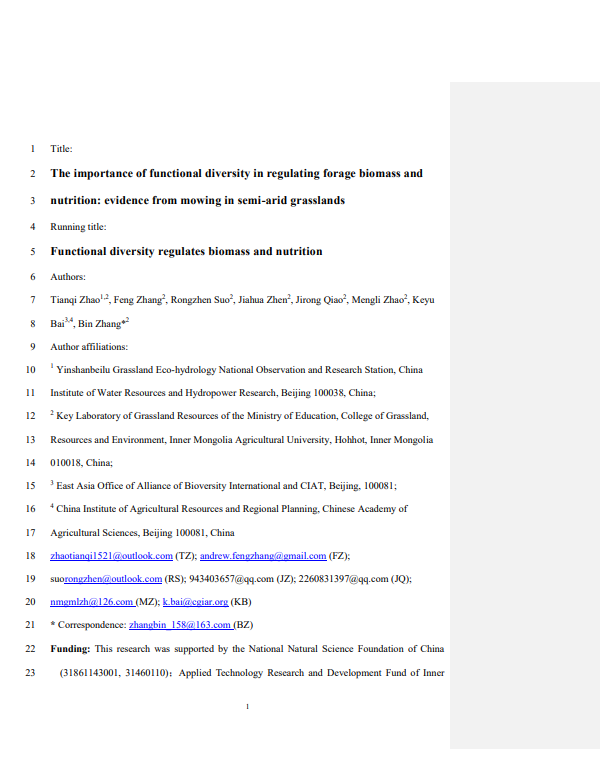Mowing removes plant photosynthetic organs, thus decreasing plant biomass and nutrients in the community. Responses of community functional diversity, biomass and nutrient status to mowing plays a crucial role in the restoration and sustainable use of degraded grasslands, but have not been well studied. Our study linked functional diversity with forage biomass and nutrition in a semi-arid grassland. We found that annual mowing reduced community biomass, in particular significantly reduced the dominant plants biomass, which was maintained with biennial mowing.
In addition, this study showed that functional diversity could be maintained at a high level under biennial mowing compared to unmowed, but significantly decreased under annual mowing. Structural equation modeling indicated that annual mowing reduced dominant plants biomass by reducing community functional diversity. Mowing decreased dominant plants nutrients by decreasing community functional diversity and soil nutrients, but had no significant effect on nutrients of community and non-dominant plants.
Furthermore, there was a strong positive correlation between community functional diversity with forage production and nutrition. In conclusion, our study demonstrated that biennial mowing increases community biomass, litter mass, and dominant plant nutrition by regulating functional diversity. Therefore, biennial mowing can provide better conservation of grassland ecosystems and is a suitable grassland management practice in semi-arid grasslands.
Zhao, Tianqi; Zhang, Feng; Suo, Rongzhen; Zhen, Jiahua; Qiao, Jirong; Zhao, Mengli; Bai, Keyu; Zhang, Bin.

